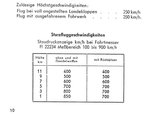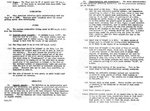Mike Williams
Senior Airman
- 572
- Oct 19, 2006
An additional note:
In many Pilot's manual only one IAS speed is given (e.g. for Typhoon).
Tempest limiting speed is given as 540mph below 10,000ft.
P47N:
564 mph at sea level
522 mph at 5,000ft
482mph at 10,000ft
So there are many caveats in this graph.
Btw. very big thanks to Micdrow for most of the pilot's manuals.
Nice table timppa. Re: your additional note: I just was composing a post to that effect - I might qualify/clarify that by noting that the rankings will change somewhat as altitude increases. For example the Spitfire IX and Me 109G will flip places over ~ 16,000 ft. The documents below further support that view.
Below please find documentation regarding Me 109 dive limitations:
Bf 109 E Flugzeughandbuch
Bf 109 G-2, G-4, G-6 Bedienungsvorschrift-FL
Last edited:






